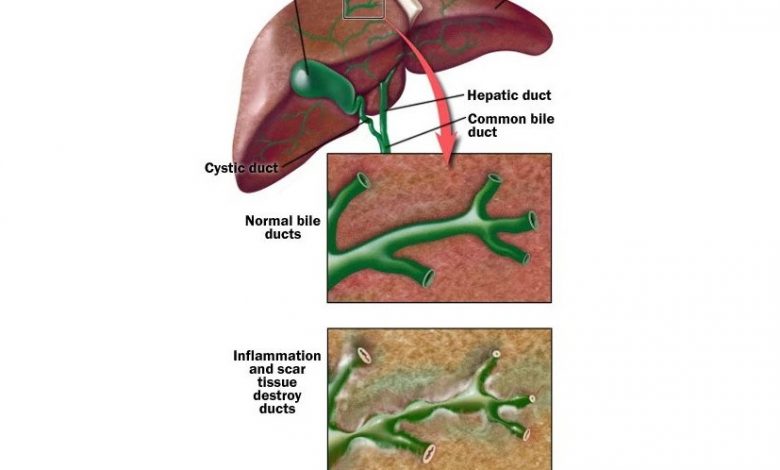

Digestive Health
By Dr Saravana.K
![[webp-to-jpg output image]](https://im3.ezgif.com/tmp/ezgif-3-96588725b814.jpg)
![[webp-to-jpg output image]](https://im3.ezgif.com/tmp/ezgif-3-96588725b814.jpg)
When bile ducts are damaged, harmful substances can build up in your liver and sometimes lead to irreversible scarring of liver tissue.
It is considered an autoimmune disease, in which the body turns against its own cells. Researchers think it is triggered by a combination of genetic and environmental factors. It usually develops slowly and medication can slow its progression, especially if treatment begins early.
Although some people remain symptom-free for years after they’re diagnosed, others experience a number of signs and symptoms.
Common early symptoms include:
Fatigue, Itchy skin, dry eyes and mouth, bone, muscle or joint pain, yellowing of the skin and eyes, darkening of the skin that’s not related to sun exposure, swollen feet and ankles, build up of fluid in the abdomen due to liver failure.
Risk Factors
Women, most likely to occur in people 30 to 60 years old and having a family member with the disease makes it more likely that you will develop it.
As liver damage progresses complications can occur including:
- Cirrhosis. Cirrhosis is liver scarring that makes it difficult for the liver to function normally
- Increased pressure in the portal vein. Blood from your intestine, spleen and pancreas enters your liver through a large blood vessel called the portal vein. When scar tissue from cirrhosis blocks normal circulation through your liver, blood backs up, much like water behind a dam, leading to increased pressure within the vein. When circulation through the portal vein is slowed or blocked, blood may backup into other veins — mainly those in your stomach and esophagus. The blood vessels are thin walled, and increased pressure in your veins can cause bleeding in your upper stomach or esophagus.
- Liver cancer.
- Vitamin deficiencies. A lack of bile affects your digestive system’s ability to absorb fats and the fat-soluble vitamins, A, D, E and K. This sometimes leads to deficiencies of these vitamins in advanced cases
- Decreased mental function.
The following tests and procedures may be used to diagnose primary biliary cirrhosis.
Laboratory tests:
- Blood tests to check liver function and signs of autoimmune disease. An analysis of your blood may reveal anti-mitochondrial antibodies (AMAs). A positive AMA test is considered a very reliable indicator of the disease. However, a small percentage of people with the disease don’t have AMAs.
- Because no cure exists for primary biliary cirrhosis, treatment focuses on slowing the progress of the disease, relieving symptoms and preventing complications.
- Ursodeoxycholic acid is a bile acid that helps move bile through your liver. It doesn’t cure it, but it may prolong life if started early in the disease
- Liver transplant. When the liver begins to fail, a liver transplant may help prolong life.


